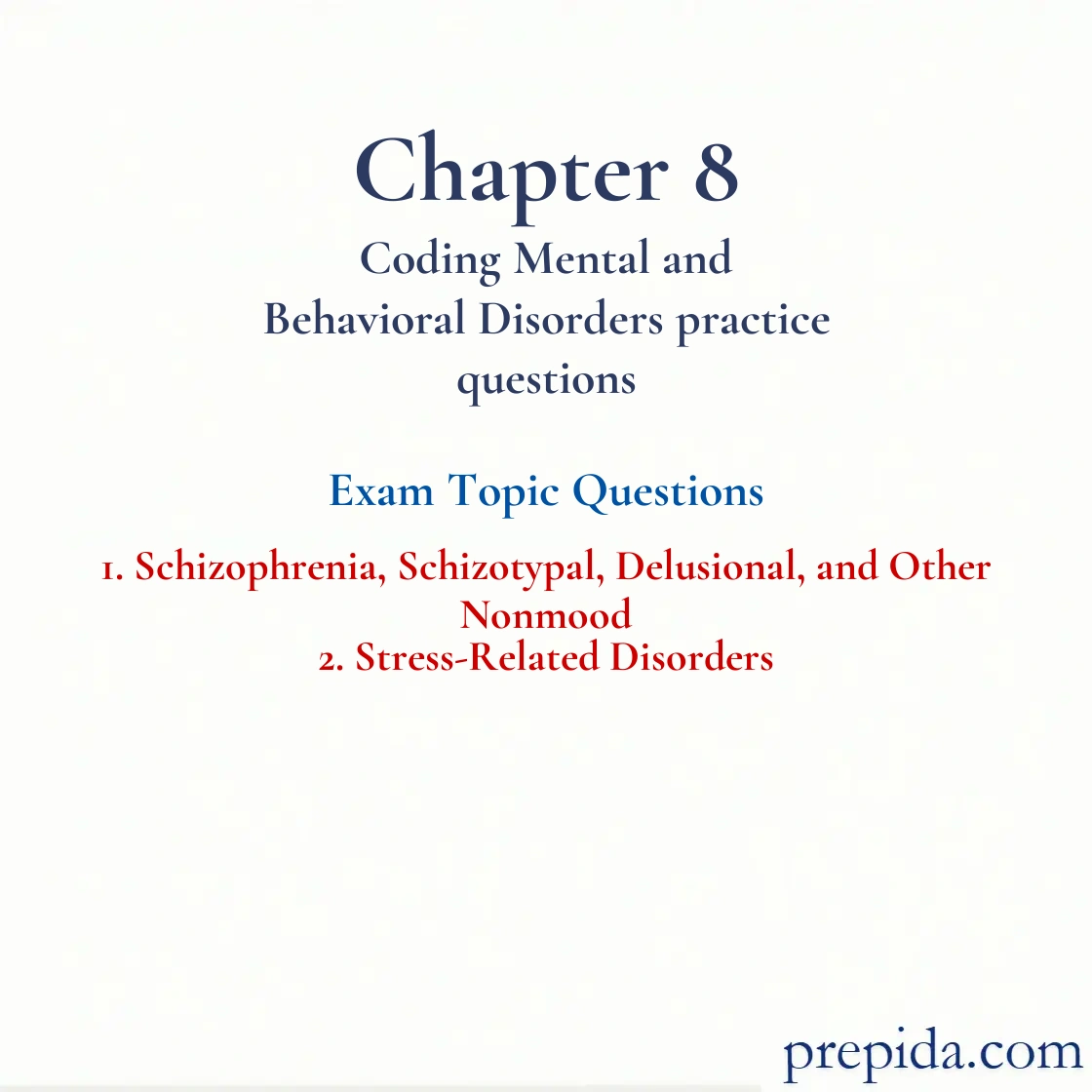
Which of the following disorders has no known cause?
- Anxiety
- Depression
- Obsessive-compulsive disorder
- Schizophrenia
Schizophrenia has no known cause.
Morbidity: The status of being diseased.
How many types of schizophrenia are recognized by psychiatric professionals?
- 2
- 5
- 8
- 10
There are five types of schizophrenia recognized by psychiatric professionals: paranoid, disorganized, catatonic, undifferentiated, and residual.
Which of the following is not a type of schizophrenia?
- Catatonic
- Disorganized
- Paranoid
- Methodical
Methodical is not a type of schizophrenia.
Which of the following is not a sign and symptom category for schizophrenia?
- Behavioral symptoms
- Cognitive symptoms
- Negative symptoms
- Positive symptoms
The 3 groups of signs and symptoms for schizophrenia are cognitive, negative, and positive symptoms.
Sign: Objective evidence of a disease or condition.
What is the correct code assigned for hebephrenic schizophrenia?
- F20.0
- F20.1
- F20.2
- F20.3
The correct code for hebephrenic schizophrenia (disorganized) is F20.1. F20.1: Index>schizophrenia>hebephrenic.
Sign: Objective evidence of a disease or condition.
What is the correct code assigned for atypical schizophrenia?
- F20.0
- F20.1
- F20.2
- F20.3
The correct code for atypical schizophrenia is F20.3. F20.3: Index>schizophrenia>atypical.
Sign: Objective evidence of a disease or condition.
What is the correct code assigned for paranoid reaction?
- F21
- F22
- F23
- F24
The correct code for paranoid reaction is F23. F23: Index>reaction>paranoid.
Para: An alphanumeric that identifies the number of times a woman has given birth, designated on the chart as P1, P2, etc.; had a fetus reach viability.
What is the correct code assigned for cyclic schizophrenia?
- F25.0
- F20.5
- F20.2
- F25.1
The correct code for cyclic schizophrenia is F25.0. F25.0: Index>schizophrenia>cyclic.
People with a relative who has schizophrenia are how many times more likely to develop schizophrenia themselves?
- 5
- 10
- 20
- 50
People with close relatives who have schizophrenia are 50 times more likely to develop the condition.
Morbidity: The status of being diseased.
How many groups of signs and symptoms does schizophrenia have?
- 2
- 3
- 4
- 5
There are three groups of signs and symptoms for schizophrenia: positive symptoms, negative symptoms, and cognitive symptoms.
How many adults are affected by PTSD in the United States?
- 5 million
- 7.5 million
- 9 million
- 12 million
There are 7.5 million adults in the United States affected by posttraumatic stress disorder (PTSD).
Morbidity: The status of being diseased.